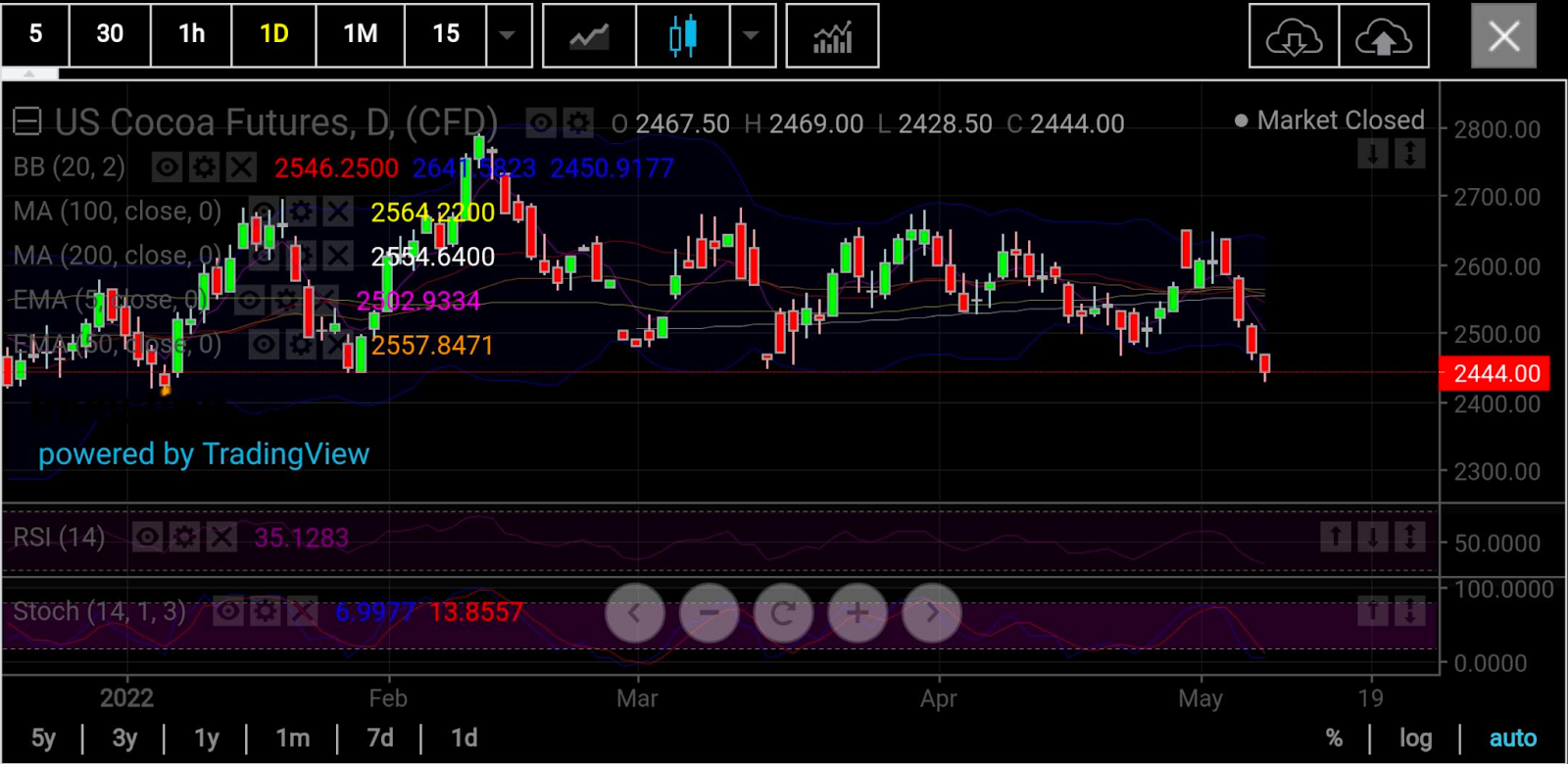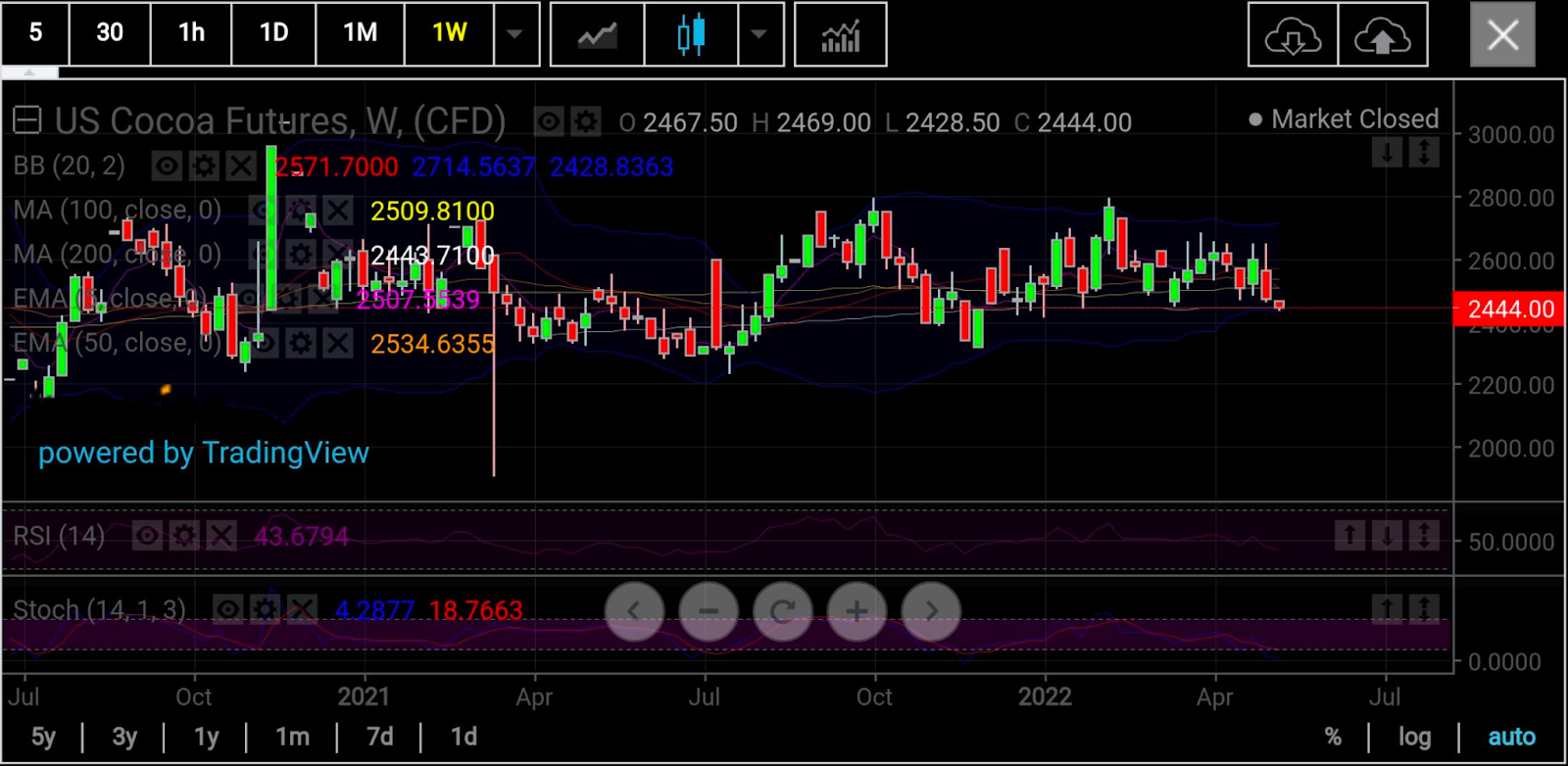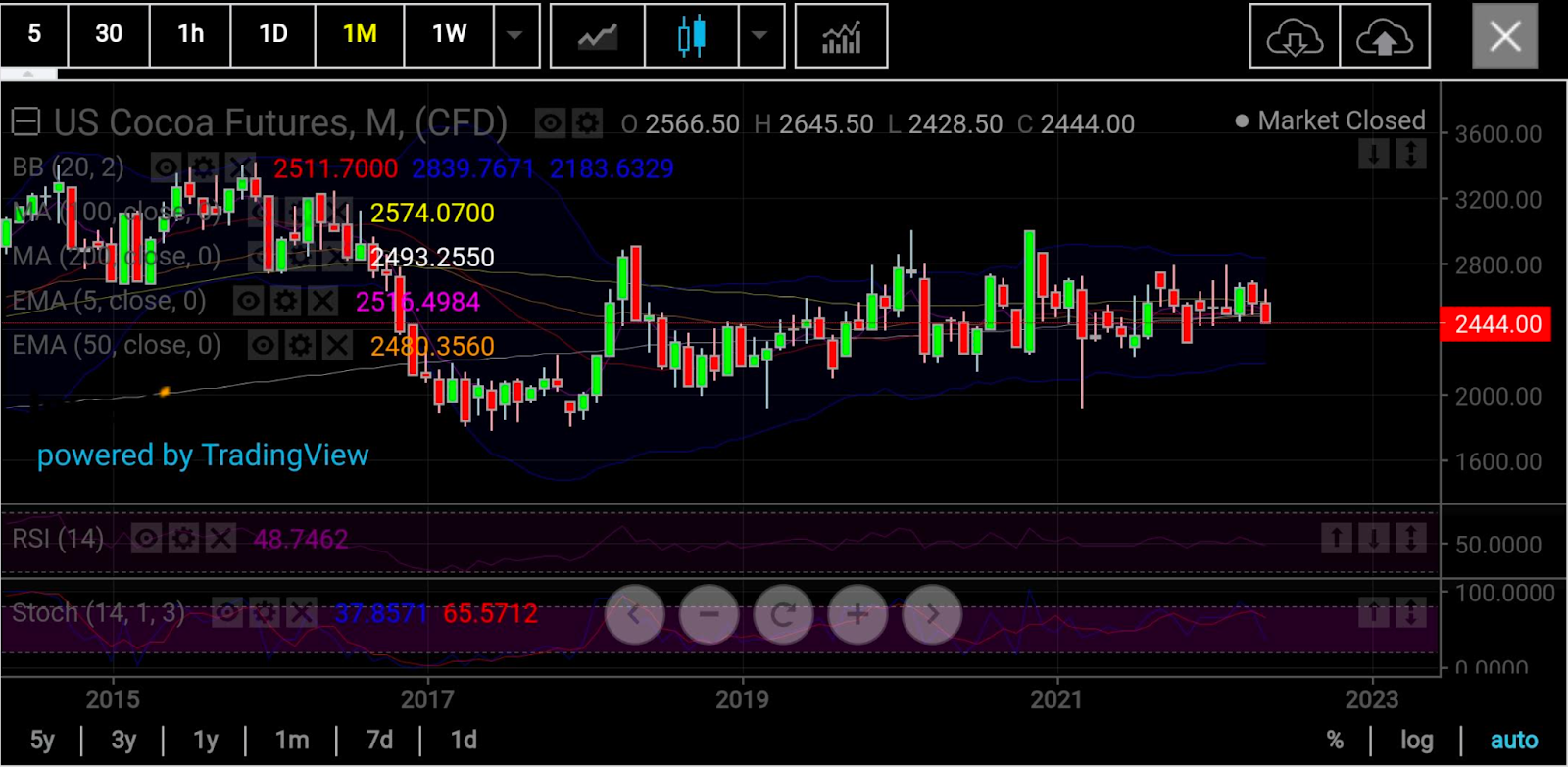Chocolatiers are spoiled for choice now when it comes to cocoa bean supply—and that’s not good for growers of the commodity.
Like all raw materials, cocoa goes up and down in price based on its production volume; in this case, its beans.
But cocoa’s value is also determined by something else—the amount of beans that get ground each quarter by confectioners in North America, Europe, and Asia, who together account for the demand for chocolate and other treats made from the commodity.
What also makes cocoa unique is the higher the quantity of its ground products—i.e. cocoa butter, powder, and liquor—in the market, the higher the price of the primary commodity itself. This is different from, say, refined oil products like gasoline and diesel, which would drop in value from a supply glut that would also likely weigh on the crude oil price itself.

Charts courtesy of skcharting.com
Last week, New York-traded cocoa futures on ICE Futures US hit 3-week highs of $2,650 a tonne on signs of stronger North American demand for chocolate.
The rally came after Hershey (NYSE:HSY), the largest chocolate producer in North America, reported a Q1 North American confectionary sales of $2.22 billion, stronger than the consensus of $2.07 billion, and raised its full-year net sales growth forecast to up 10%-12% from a prior forecast of up 8%-10%.
The European Cocoa Association also reported that Q1 European cocoa grindings rose 4.4% year-on-year to 373,498 tons, the most in more than a decade.
That contrasted with the 3% price drop for all of March as demand concerns weighed on the market after the North American Confectioners Association reported on Apr. 22 that Q1 North American cocoa grindings fell 2.8% year-on-year to 114,694 tonnes.
Also, the Cocoa Association of Asia reported Asian Q1 cocoa grindings fell 0.25% year-on-year to 213,313 tonnes.

Fast forward to this week: As of Monday, ICE cocoa futures for July delivery fell for a fourth session, hitting a 1-1/2 week low as the dollar hit 20-year highs, weighing on the universe of commodities priced in the greenback.
But cocoa wasn’t just down on a strong US currency. Signs of abundant bean supplies also weighed on the market as top grower Ivory Coast reported that its farmers sent a cumulative 2.06 million tonnes of cocoa to ports from Oct 1-May 8, almost matching the high output of 2.07 million tonnes for the previous season.
This is despite a Bloomberg report that Artisanal gold miners in Ghana—the world’s second-largest cocoa grower, also in Africa—had damaged large swathes of farmland over the past year that had worsened the outlook for the cocoa harvest there.
More than 19,000 hectares, or about 2% of cocoa plantations, have been destroyed by so-called galamsey, small-scale miners who often operate illegally, Bloomberg reported, citing a spokesman for the Ghana Cocoa Board. Authorities have also cautioned that Ghana is unlikely to meet its initial output target of 850,000 tons this year.
“New York cocoa prices are lower on liquidation trading,” Jack Scoville, chief crop analyst at Chicago’s Price Futures Group, said on Monday. “The weather is good for harvest activities in West Africa. Ghana’s cocoa arrivals have been below year-ago levels, but Ivory Coast’s arrivals are ahead of last year.”
The bountiful production in cocoa jars with the trend seen now in most other commodities from energy to metals and grains where supply chains disruptions since the outbreak of the coronavirus pandemic have crimped the volume of raw materials available to buyers, sending prices soaring and US inflation to four-decade highs.
Chocolate, ice cream, baked goods, and cocoa beverages are luxury and festive products that typically see high demand during good economic times—and weak consumer appetite when things aren’t going so well.
Cocoa fell 19% in March 2020 during the first global outbreak of the COVID-19. But it managed to end that year almost in the flat on the back of the global economic recovery from the pandemic. Last year, cocoa rose just over 3% while this year so far, it is down more than 3%.

Fundamentals aside, the technical outlook for cocoa isn’t promising either, with indications that the downside could extend to August 2021 lows of $2,350—another 4% below current levels.
“Cocoa is breaking below the previous month's low and hovering significantly below the major moving averages on the daily and weekly charts,” said Sunil Kumar Dixit, chief technical strategist at skcharting.com.
Charts show cocoa on the weaker side of the 100-day Simple Moving Average of $2,564 and the 200-day SMA of $2,554, as well as the 50-day Exponential Moving Average of $2,557 on the daily chart, Dixit said.
“Given the oversold stochastic conditions on the daily and weekly charts, the downside can be limited to $2,400 and $2,350,” he said.
“However, oversold stochastic readings of 7/15 and 4/18 on the daily and weekly charts may cause some recovery to support areas of $2,500-$2,550 in the near term.”
Disclaimer: Barani Krishnan uses a range of views outside his own to bring diversity to his analysis of any market. For neutrality, he sometimes presents contrarian views and market variables. He does not hold a position in the commodities and securities he writes about.
